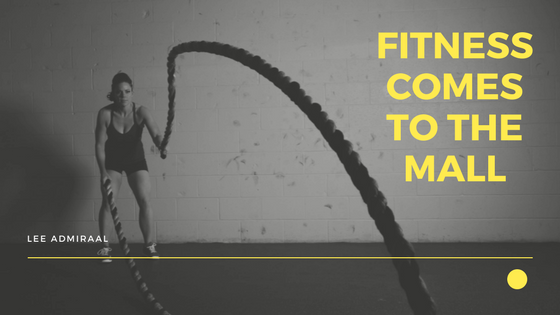Now that malls are a central hub for all things living, working, and playing, fitness centers are moving in. Fitness has a place at the mall now, and several key players in the fitness industry are capitalizing. The Wall Street Journal explains that many of the new tenants at shopping centers are gyms and specialty fitness studios that in some cases are barely bigger than a Starbucks store. But owners of regional malls are also welcoming sprawling, full-service health clubs.
Tough Mudder
The International Council for Shopping Center explains that Tough Mudder is using the franchise model for their new studios. Instead of building their own brick and mortar work out centers, Tough Mudder plans to inhabit spaces already built, inside of shopping centers. “We could have obviously just started building our own studios and maybe had a smattering of them by the end of the year, but we wanted to do it differently,” said Cathrin Bowtell, a company senior vice president. “Much like Tough Mudder has the reputation for being disruptive and taking a different approach to many things, we are doing the same thing here in the way that we are solving for the retail model of these boot camps, and doing it via franchising.” Two Tough Mudder studios, called boot camps, are slated to open in the Boston and Houston areas before the end of 2017, with another 65 territories already reserved in the United States.
Fitness Centers
Southdale Center in suburban Minneapolis is known for being the country’s first indoor regional mall. Plans there are underway for a three-story Lifetime fitness complex to take over a soon-to-close JC Penney store. Bahram Akradi, CEO of the fitness company, said in an interview that malls can be reimagined as “healthy living and aging village with residences, entertainment, exercise, services and shops.”
Studios
Yoga and soulcycle studios are popping up all across the United States, and malls are no exception. The Wall Street Journal explains that the proliferation of boutique fitness studios, which specialize in things like cycling or boot camp and often command $30 or more a class, has made fitness more attractive and easier to fit into retail centers. Nationwide, membership in fitness boutiques grew 74% from 2012 to 2015, compared with 5% for traditional commercial gyms. Shopping centers are welcoming these studios with open arms.
The Real Deal writes that the once-shunned gym has become a popular tenant of malls and shopping centers for two reasons: the fitness industry has boomed and mall owners are looking to fill vacant spaces. People who workout are more likely than ever to shop after they get their workout in because it has become socially acceptable to wear fitness clothing outside the gym. All of these ingredients have come together to create the perfect recipe of fitness and malls.

